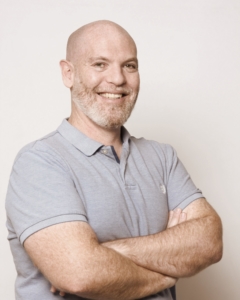The Difficulties in Achieving Scale
The Difficulties in Achieving Scale
In today’s guest blog post, Bruce Baker continues discussing the difficulties in achieving scale.
So why did this happen to someone like Julia? There was no cause for alarm because she and her business had the best year ever and had built up an impressive cash cushion. If this was the case, surely this meant that she knew what she was doing? Also, she had built up the business steadily over the last few years. The problem was the danger and risk associated with a “place of comfort” that Julia had created for herself.
Like many, this reduced her sense of urgency and importance (see my last blog – Chapter 2) regarding her initial need to scale her existing business and establish a solid foundation for ongoing growth.
Julia (like many of us) was caught unaware by an unconscious human bias called the Parkinson’s effect (i.e., usage expands as more availability/supply is provided/made available). In this case, having more cash available provided a long-awaited sense of comfort and release. This created a sense of confidence in utilizing a scarce resource without much thought as to the long-term implications. As soon as the supply (cash) is limited and someone is in crisis, only then (like in Julia’s case) makes an extreme sense of importance and urgency surface.
Human beings (business owners included) typically overestimate their chances of success at the end only to learn that what they fell in love with initially was not the end-result they were expecting. In many cases, we are dazzled by the thought of the end-success that very little if any thought is placed in the actions required to achieve a successful end-result. This sense of over-optimism tends to create blind spots in our ability to plan and execute effectively. Only after failure is imminent or has occurred, we then tend to look for external reasons for our failure(s) versus our tendency to be willfully blind at times.
Of course, Julia and I made up for lost time but to get Julia back on track. I want to share two techniques we used to ensure her success moving forward.
- To ensure Julia reduced the chances of being misdirected by the Parkinson’s effect, I introduced and helped Julia implement a Profit First system, which provides a solid way to allocate cash to the right parts of the business system. I said to Julia that if she adopted the system and continued to generate revenue like she had been doing, using this system would guarantee her profitability and eliminate her debt in the company. Julia’s response was priceless, more so because of the look on her face when I said this and her reluctant response saying no one can guarantee to eliminate debt and make a profit. To no surprise, Julia’s cash situation has improved tremendously in the business. She sees a profit, reduces her debt, and pays herself for the first time in six months.
- The last technique I introduced to Julia was planning every aspect of her business (including the investment in other business ventures) through worst-case scenario planning. Julia’s comment to me was that this did not make sense as she wanted to be positive in her approach to planning her business’s growth. I responded to her by saying that there was nothing wrong with thinking positively and leveraging hers and the company’s strengths in the planning process. The problem is that optimism and excitement tend to blind us by overestimating the positive/successful outcome. I added to this by reminding Julia that her strengths can become weaknesses or even irrelevant as the business grows. Planning for a worst-case scenario puts the business owner and the company’s existing operating template under a stress test. It ensures that any potential weaknesses or shortfalls in the business systems operating routine/template are identified and strengthened. Since using this approach with Julia, the systems, and structures we started working on initially are scrutinized and implemented successfully.
For more information on not just the tools Julia used but the process she went through to make the transition happen, please send an email to in**@*********es.com, where I would be happy to send you a copy of the tool video tutorial on the process you can follow.

